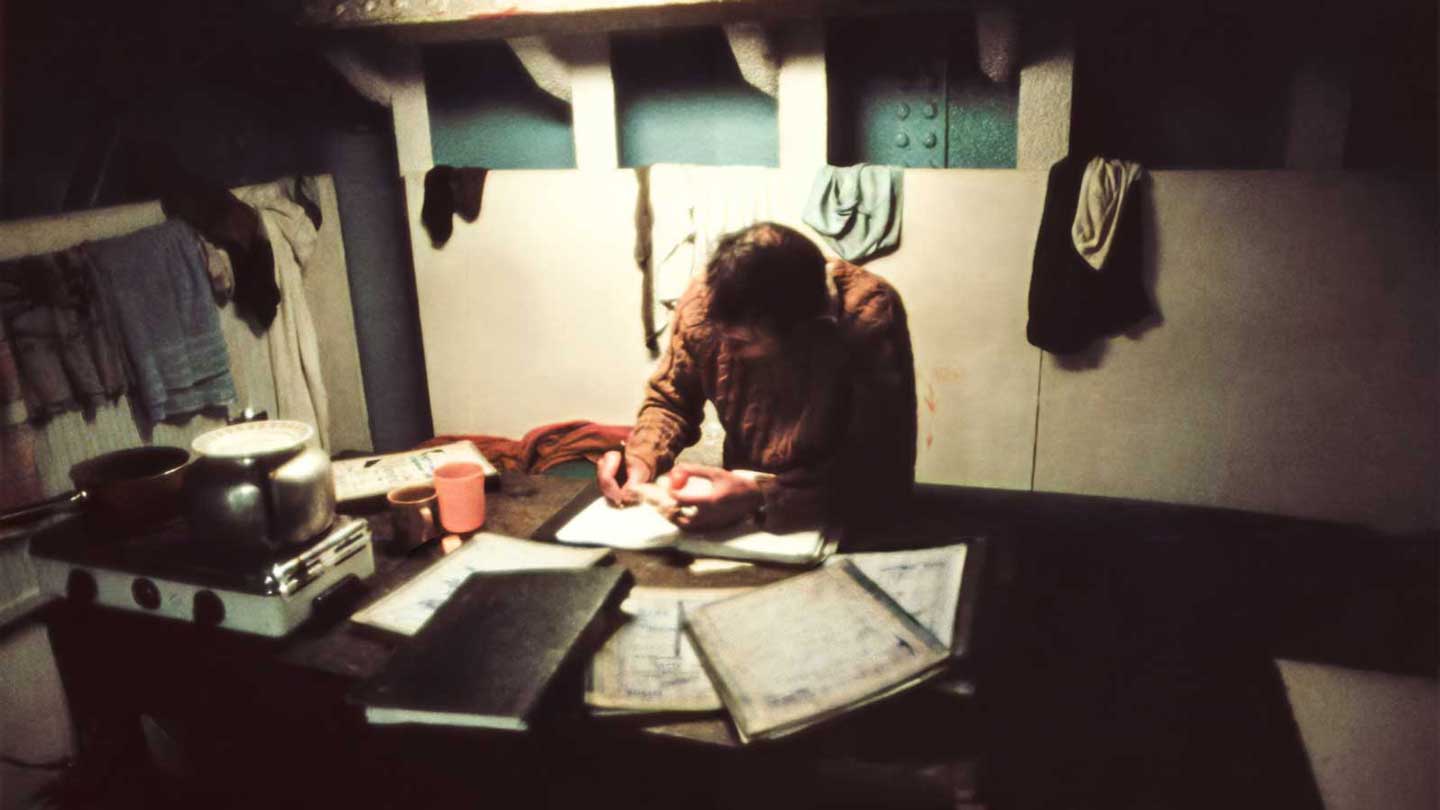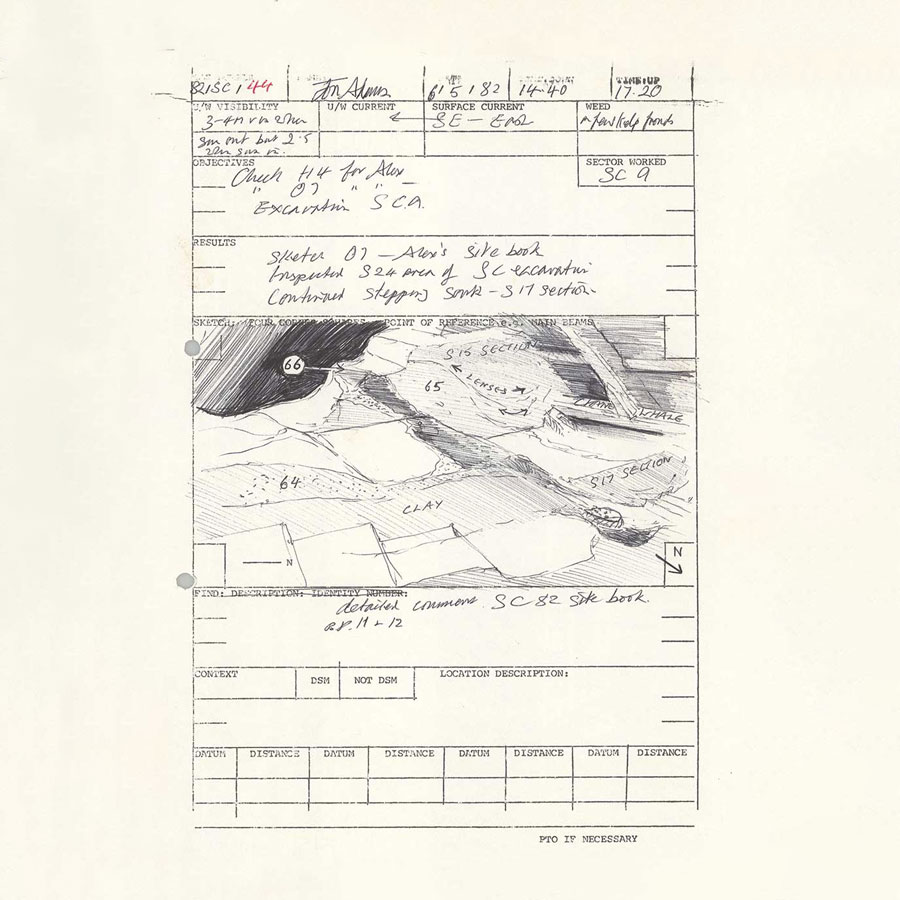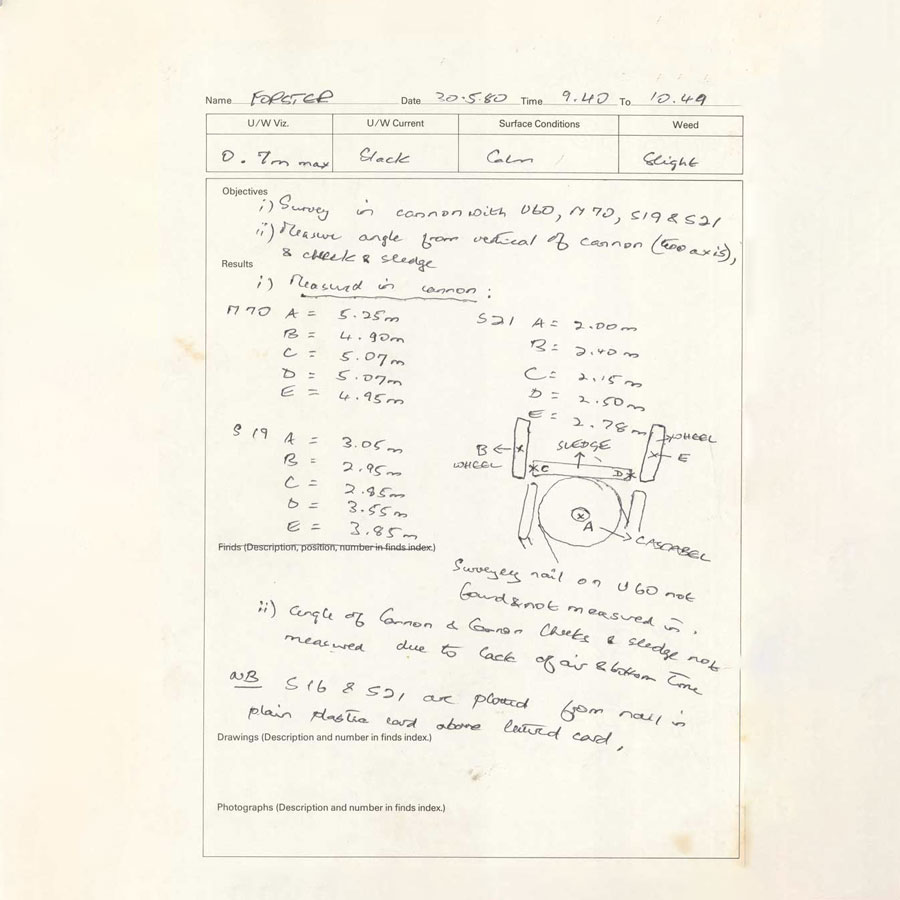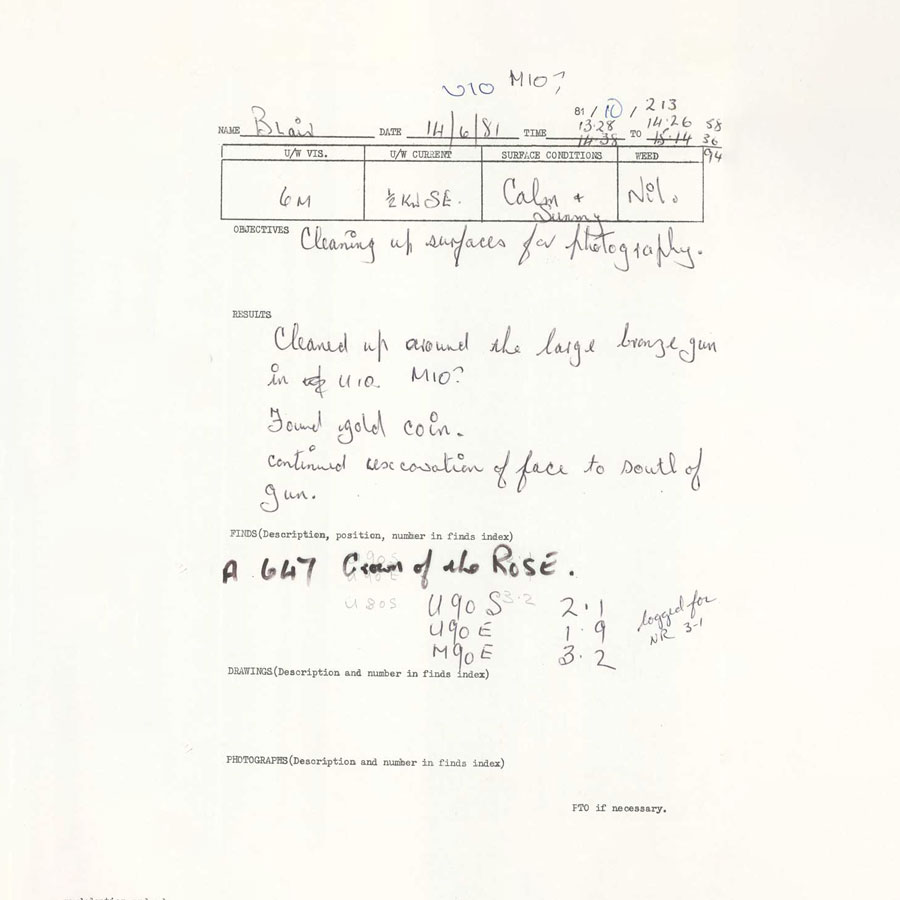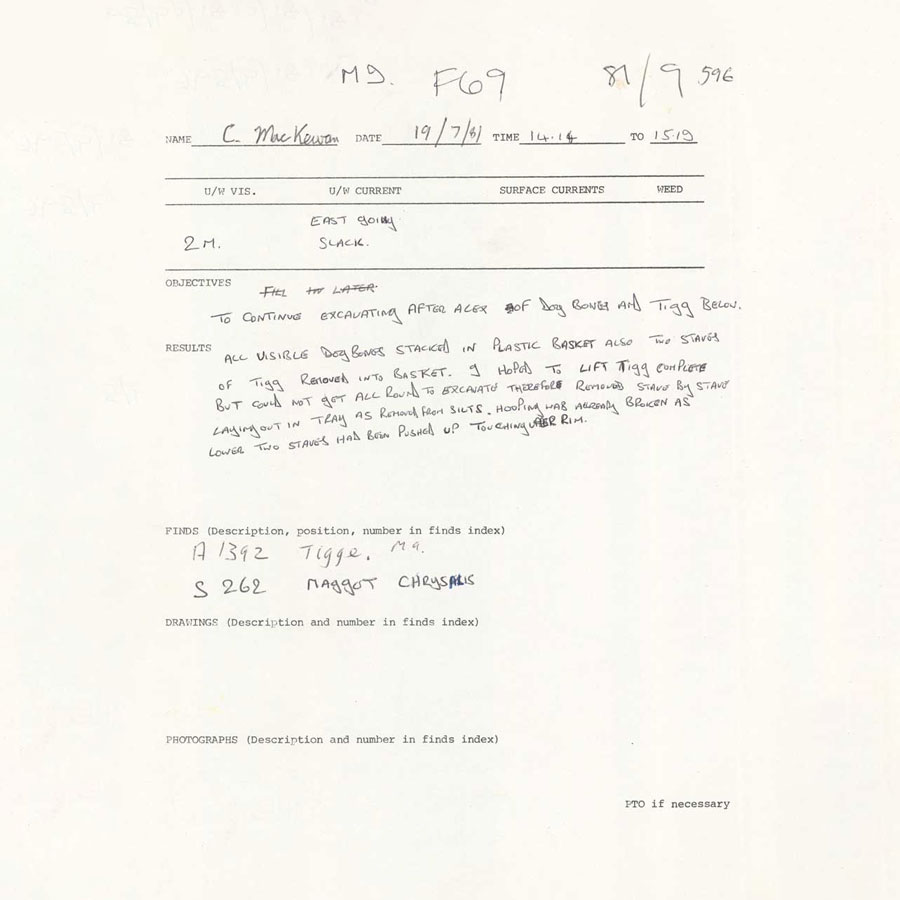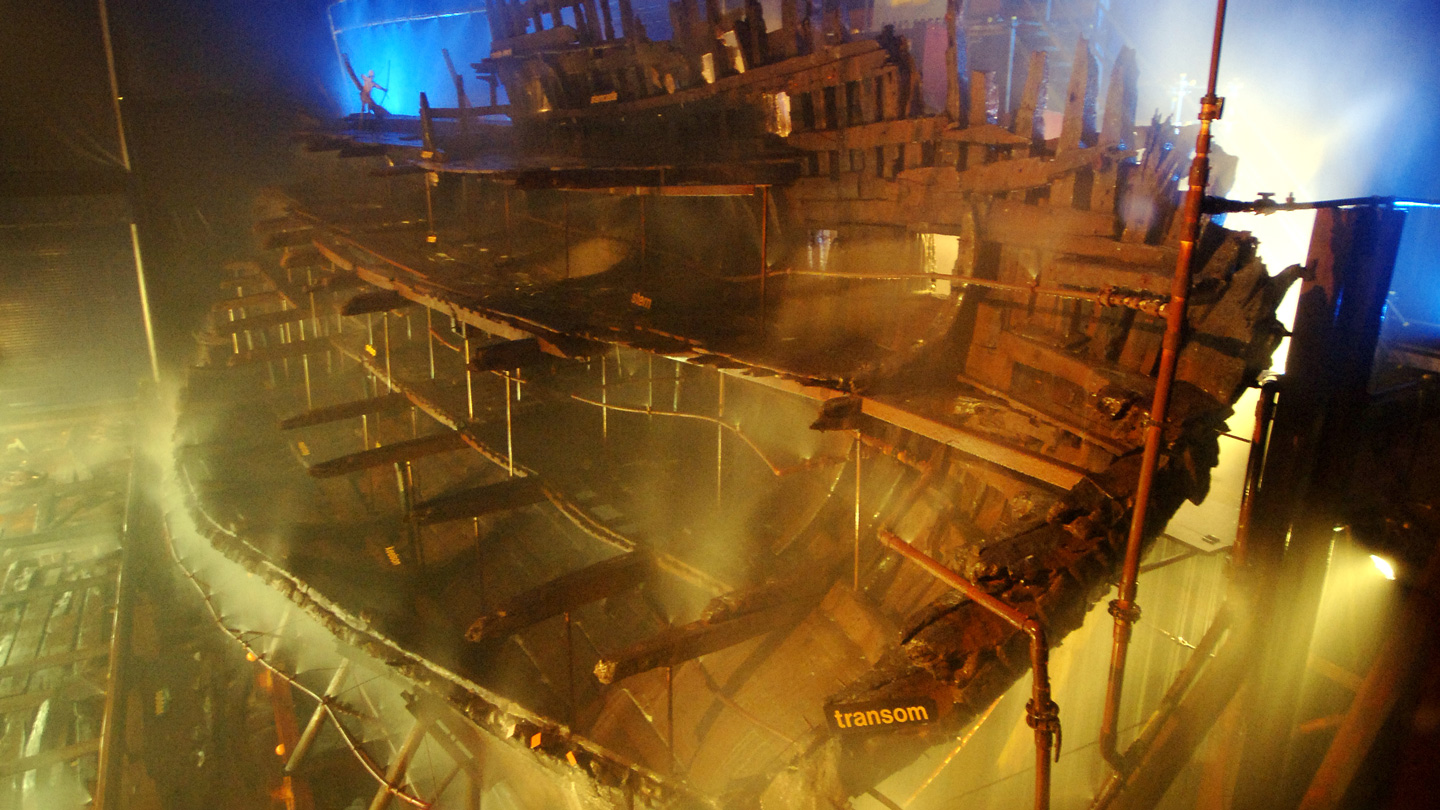After completing the scanning of the catalogued images from the Mary Rose Archaeological Archive at the start of 2023, our incredible team of Collections Volunteers have just completed scanning the dive logs. These paper-based records were filled out once a diver surfaced after their underwater excavation and work on the site. Scanning this part of the archive is a significant leap forward for the project to digitise the archive to safeguard it for the future and make it more accessible. We thought this milestone would be a great opportunity to reflect on some of the items that have been scanned and why this unique collection of records is so significant.
The dive logs form the core of the Archaeological Archive – recording the excavation process, the information they contain includes when dives took place, objectives for each dive and what the outcomes of the dives were.
They often included sketches, measurements and a list of any artefacts that were recovered. The Mary Rose archaeological dive logs start from 1977 (as the project to recover the contents of the ship was scaling up). Dive logs were a crucial source of information for ensuring the authenticity of the Context Gallery at the Mary Rose Museum – where artefacts are displayed in their archaeological context in a mirrored version of the hull. These records continue to be a vital point of reference for the Mary Rose team in understanding and researching the collection.
